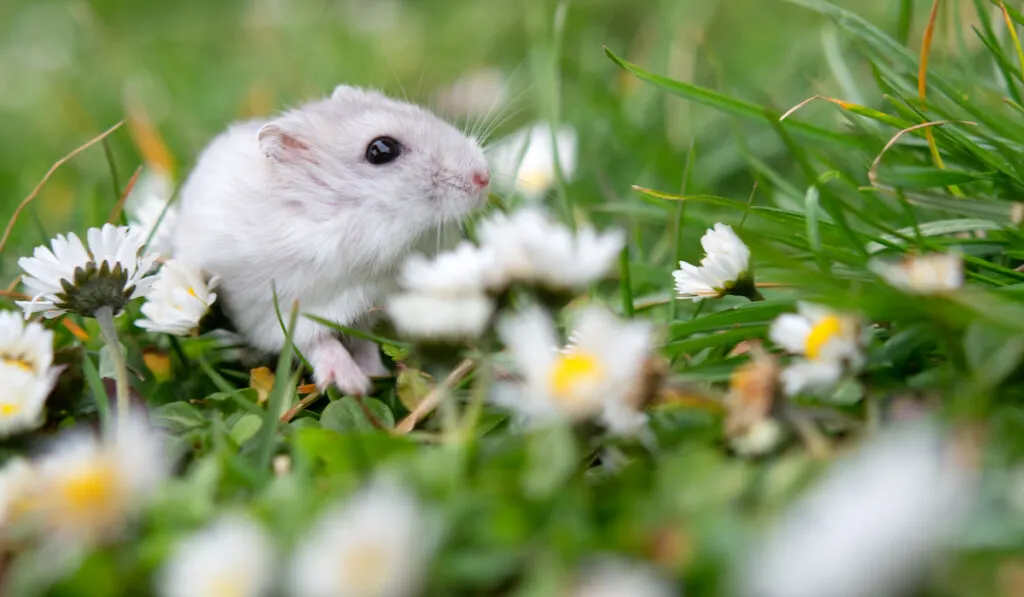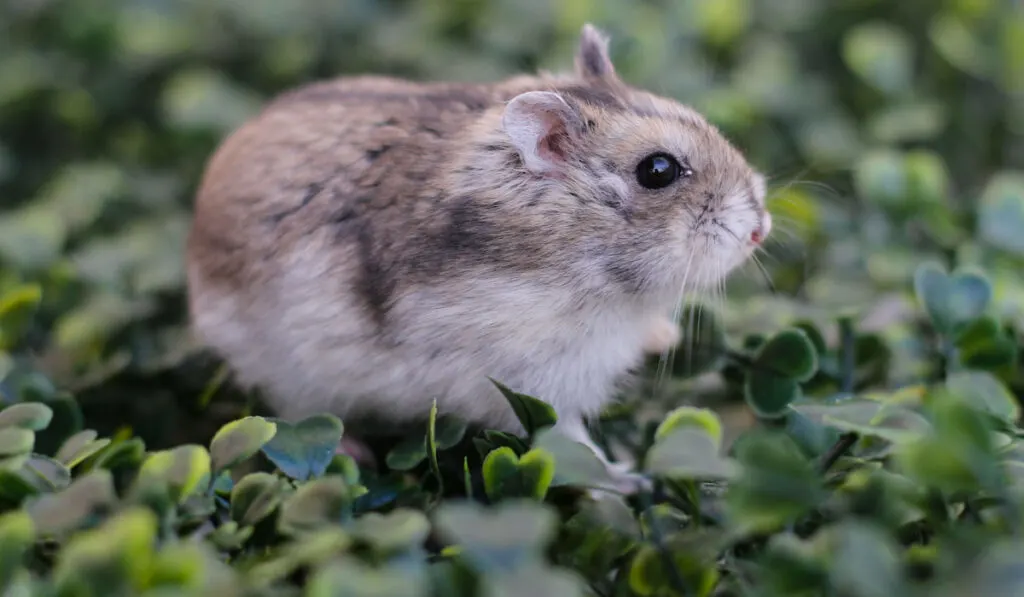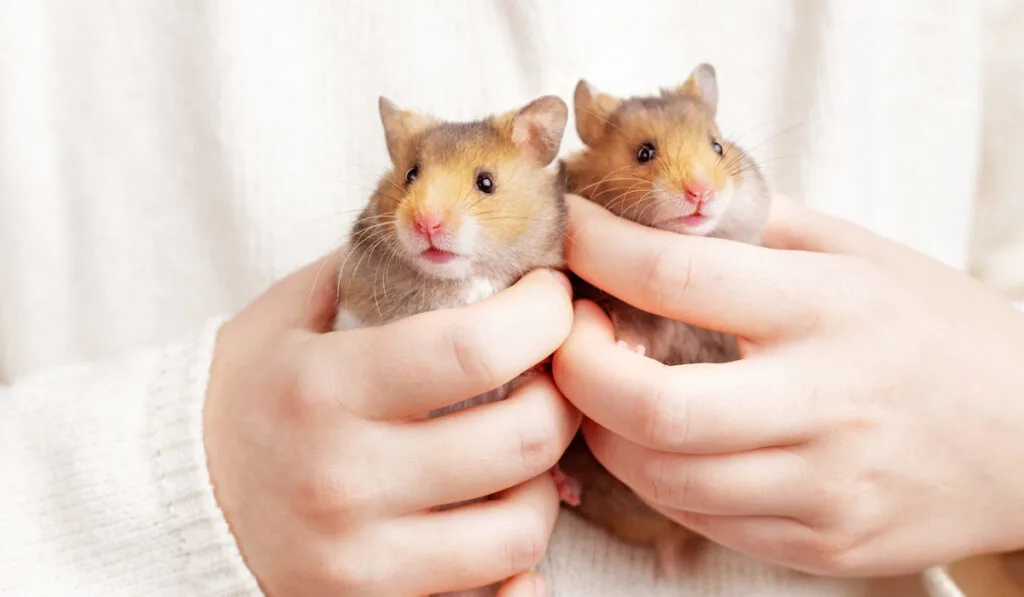You might think that any two species of hamsters can live together. But in reality, that’s not necessarily the case. Some hamster species prefer solitude, so trying to get them to live alongside other species may be troublesome.
What type of hamsters can live together?
Generally, Dwarf hamsters of the same species can live together. However, Syrian hamsters must live alone.
In general, hamsters are solitary animals, even in the wild. They spend most of their time alone and only seek out other hamsters when it is time to mate.
For your hamster’s wellbeing, you must try to replicate its natural environment as much as you can. Of course, this includes preserving its solitude.
In this article, we discuss the details of housing hamsters together. We also mention tips for keeping multiple hamsters and more.
Table of Contents
What Type of Hamsters Can Live Together?
As we already said, hamsters generally cannot live together. They are naturally solitary and are more comfortable living as such.
However, if you do intend to keep hamsters together, then you can try out some of the Dwarf hamster species below:
Campbell’s Russian Dwarf Hamster

Campbell’s Russian Dwarf hamster may also be called Russian hamster or Dwarf hamster. Members of this species are one of the few types of hamsters that can live together.
When preparing to keep more than one Campbell’s Russian Dwarf hamster together, know that it is possible to keep a pair of the same sex. Meaning you don’t have to open yourself up to the possibility of having young hamsters.
Alternatively, you may have a group of the same sex. If you intend to keep a group, you should provide more than enough space or there will be turf wars.
While same-sex pairs or groups are recommended for Campbell’s Russian Dwarf hamster, there can be fallouts. So, pay attention to signs of squabbles and bullying and separate the hamsters if you have to.
Since both hamster types are typically kept in captivity, Campbell’s Russian Dwarf hamster and Winter White hamsters may also live together.
Roborovski Hamsters

Roborovski hamsters, also called Robos, have been seen living in pairs in the wild. They are one of the few hamster species that live with others. However, more times than not, they live alone.
While Roborovski hamsters are typically seen alone, they are one of the species most likely to cohabitate well with others.
You can keep Roborovski hamsters together in one enclosure. However, you must ensure that it has enough space for all the hamsters to seek some alone time if they wish.
While Roborovski hamsters live in pairs and groups with minimal issues, you should still monitor them for aggressive behavior.
Roborovski hamsters are generally friendly. But while they rarely ever bite, they are not easy to handle because of their extreme activity.
Winter White Hamsters

Pure winter white hamsters are rare to come by in the pet trade industry. On the other hand, hybrids are pretty easy to find.
Hybrid winter white hamsters live in groups of two or more in the wild. They may even share their burrows amongst themselves and with other animals when winter comes.
Contrarily, in captivity, getting them to live together is not so straightforward. But the constraints are, on the whole, dependent on the available space.
In other words, if you provide ample space for a pair or group of hybrid winter white hamsters, they should cohabitate successfully.
Hamsters That Cannot Live Together
Syrian Hamster
Syrian hamsters, also called Gold or Teddy Bear Hamsters, are one of the species most commonly kept as pets. They are pretty docile and are one of the largest-sized hamsters.
Interestingly, while they are generally docile and very friendly with humans, they do not cohabitate well.
Syrian hamsters should not be made to live with other hamsters. They are strictly solitary and are very territorial. Pair them up, and you are sure to see them have a fight.
The behavior of captive Syrian hamsters is not totally surprising, however. In the wild, they live in solitude and only pair up when it is time to mate. So, how they act when in captivity reflects their natural selves.
Chinese Hamster

Chinese hamsters are a species of Dwarf hamsters. But while we said Dwarf hamsters can live together, Chinese hamsters are an exception.
Unlike the other Dwarfs we discussed, Chinese hamsters do not do well when living with others. They are solitary, just like Syrian hamsters. So, never try to pair them up.
If you pair one male Chinese hamster to a female, things will only work if you place them in separate enclosures. With this arrangement, you’d only have to put them together when it’s time to mate.
Should Male and Female Hamsters Live Together?
Hamsters attain sexual maturity very fast. In about 4 weeks after birth, they become sexually mature. So, if you keep a male and female hamster together, they are highly likely to yield litter.
Having litter from your hamsters is good news if you want them and if you have sufficient space to keep them. Anything other than those conditions is undesirable.
Besides the litter problem, keeping male and female hamsters together may potentially brew aggression. Female hamsters are typically very aggressive and territorial after giving birth. In some cases, they attack and feed on their own offspring. Sadly, if this happens, every other hamster around is unsafe.
Overall, same-sex hamster pairings or groups are less likely to experience confrontations than male-female pairings. This is especially true when the pairing or members of the group come from the same litter.

Even at that, you should still monitor your same-sex groups or pairings, especially if they are males.
That being said, if you intend to keep a male and female pair, keep them in separate enclosures and only let them meet to mate.
Keeping male and female hamsters in separate enclosures might also help curb the consequences of postnatal aggression in female hamsters.
Final Thoughts
It is generally said that Dwarf hamsters can live together. However, you should be cautious with your interpretation of that statement.
While Dwarf hamsters like Robo and winter white can live together, Chinese hamsters can’t. Besides Chinese hamsters, you should avoid keeping Syrian hamsters together as there will surely be trouble.
